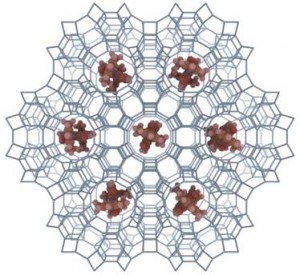Vaga para realizar doutorado em projeto de ressonância magnética detectada eletricamente (RMDE) de fios moleculares, com orientação do professor Carlos Graeff (Unesp – campus de Bauru). O trabalho envolve estágio de pesquisa na Holanda, no grupo de Nanoeletrônica do professor Wilfred G. van der Wiel, e possibilidade de estágio na Universidade de Estrasburgo, na França. O trabalho será desenvolvido dentro do CEPID Centro de Desenvolvimento de Materiais Funcionais (CDMF), com bolsa da Fapesp.
Interessados devem entrar em contato com o professor Carlos Graeff pelo e-mail graeff@fc.unesp.br.
Título do projeto: “Electrically Detected Magnetic Resonance in Molecular Wires”

Resumo do projeto.
Systems featuring large magnetoresistance (MR) at room temperature and in small magnetic fields are strongly sought-after due to their potential for magnetic field sensing and data storage. Usually, the magnetic properties of materials are exploited to achieve large MR. Recently, we have discovered an exceptionally large, room-temperature, small-field MR effect in 1D, non-magnetic systems of molecular wires self-assembled in a zeolite host crystal [R.N. Mahato, H. Lülf, M.H. Siekman, S.P. Kersten, P.A. Bobbert, M.P. de Jong, L. De Cola and W.G. van der Wiel, Science 341, 257 (2013)]. This ultrahigh MR effect is ascribed to the dramatic consequence of spin blockade in 1D electron transport. In this project we will investigate this system more elaborately, in particular we will perform electron spin resonance (ESR) experiments. From electrically detected magnetic resonance (EDMR) measurements we hope to learn more about the character of the charge carriers, the molecular orbitals involved, and we may be able to realize quantum coherent oscillations.
